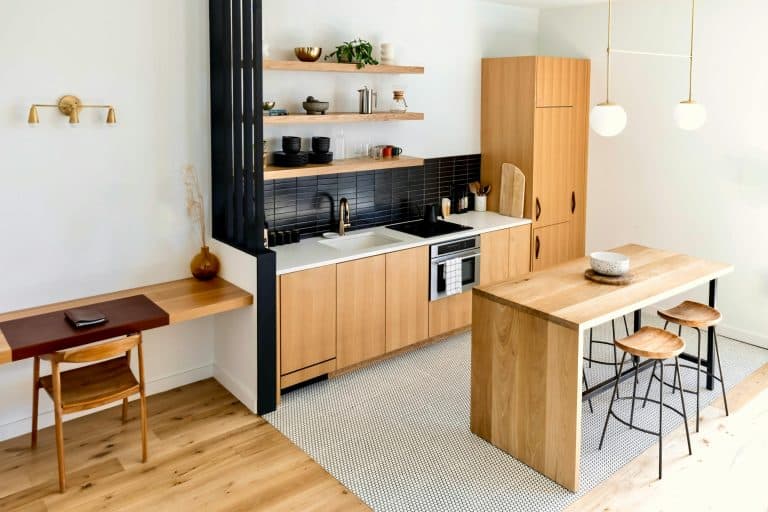Renovating your home is an exciting opportunity to refresh and enhance your living space, but it often comes with a hefty price tag. How can you tackle these costs without draining your savings or taking on substantial debt?
The good news is that there are creative financing options available that can help you spread out your renovation expenses and manage your budget more effectively. Let’s explore some innovative ways to finance your home improvement project without financial stress.
1. Flexible Payment Plans: A Smarter Way to Manage Costs
Many contractors and home improvement stores offer flexible payment plans, making it easier to finance your renovation over time rather than paying everything upfront.
- How It Works: You agree on a total cost for the renovation with your contractor or service provider and then establish a payment schedule that fits your budget.
- Benefits:
- Reduces the initial financial burden, allowing for more immediate improvements.
- Helps maintain cash flow by breaking the total cost into smaller, manageable payments.
- Things to Keep in Mind:
- Be aware of any interest rates or additional fees that might apply.
- Understand all terms and conditions before committing to a plan.
Flexible payment plans can be a great option for those who want to start their renovation now but prefer to pay gradually. This approach is especially useful for large-scale projects where costs can quickly add up.
2. Rent-to-Own Arrangements: Try Before You Buy

Another creative financing method is the rent-to-own arrangement, which is often available for specific types of home improvement equipment or fixtures. This option allows you to “test” certain products before committing to purchasing them outright.
- How It Works: You essentially rent the items you need for your renovation, and if you decide to keep them, your rental payments contribute toward the final purchase price.
- Benefits:
- Reduces upfront costs, particularly for high-ticket items like appliances or custom fixtures.
- Offers a trial period to ensure the products meet your needs before making a long-term investment.
- Things to Consider:
- Carefully assess the quality and durability of rented items to avoid future replacements.
- Make sure the total cost of ownership, including rental fees, is comparable to or less than an outright purchase.
Rent-to-own can be particularly advantageous if you’re considering new technology or custom items, giving you the flexibility to change your mind if they don’t meet your expectations.
3. Credit Card Rewards and Sign-Up Bonuses: Make Your Spending Work for You
Using credit cards strategically can be another way to finance renovations. By leveraging credit card rewards and sign-up bonuses, you can reduce some of the costs associated with your project.
- How It Works: Select a credit card with a generous sign-up bonus or cash-back rewards, and use it for renovation expenses. The rewards or points earned can help offset the overall cost.
- Benefits:
- Earn rewards on necessary spending, potentially reducing out-of-pocket expenses.
- Some cards offer 0% APR for an introductory period, providing a window to pay off balances without interest.
- Things to Watch Out For:
- Make sure you can pay off the balance within the 0% APR period to avoid high interest charges.
- Use this method only if you are disciplined with credit card use and have a solid repayment plan.
If managed wisely, credit card rewards can turn a standard expense into a cost-saving opportunity, especially for smaller projects or as a supplement to other financing methods.
4. Home Equity Lines of Credit (HELOC): Unlock the Value in Your Home
For homeowners with significant equity, a Home Equity Line of Credit (HELOC) can be a powerful tool for funding renovations. This option allows you to borrow against the value of your home, often at a lower interest rate than traditional loans.
- How It Works: A HELOC loan provides a revolving line of credit based on the equity you have built up in your home. You can draw on this credit line as needed for your renovation project.
- Benefits:
- Typically offers lower interest rates compared to unsecured personal loans or credit cards.
- Flexibility to borrow only what you need, when you need it, making it ideal for projects with fluctuating costs.
- Things to Consider:
- Your home serves as collateral, so there is a risk of foreclosure if you fail to repay.
- Interest rates may vary over time, which could increase your payments.
A HELOC is particularly useful for extensive renovations or when you need to finance multiple projects over a period. It’s important to have a repayment strategy in place to protect your home’s equity.
5. Crowdfunding Your Renovation: Engage Your Community
Crowdfunding has emerged as a creative way to finance a variety of projects, including home renovations. This approach can be particularly effective if your renovation project has a unique or community-oriented aspect.
- How It Works: You set up a crowdfunding campaign on a platform like GoFundMe or Kickstarter, explaining your renovation project and why you need financial support. Friends, family, and even strangers can contribute to help you reach your funding goal.
- Benefits:
- Funds received through crowdfunding do not need to be repaid.
- It can create a sense of community involvement and support.
- Things to Keep in Mind:
- Success largely depends on your network and ability to market your campaign effectively.
- Some crowdfunding platforms charge fees or take a percentage of the funds raised.
Crowdfunding might not be the traditional route, but it can be a great option for those who want to involve their community or have a compelling story behind their renovation.
Choosing the Right Financing Strategy
Finding the right way to finance your home renovation depends on your unique situation and financial goals. From flexible payment plans and rent-to-own arrangements to leveraging credit card rewards, HELOCs, and even crowdfunding, each method offers different advantages and considerations. By exploring these creative options, you can renovate in style and pay with ease, ensuring that your dream home becomes a reality without unnecessary financial strain.










